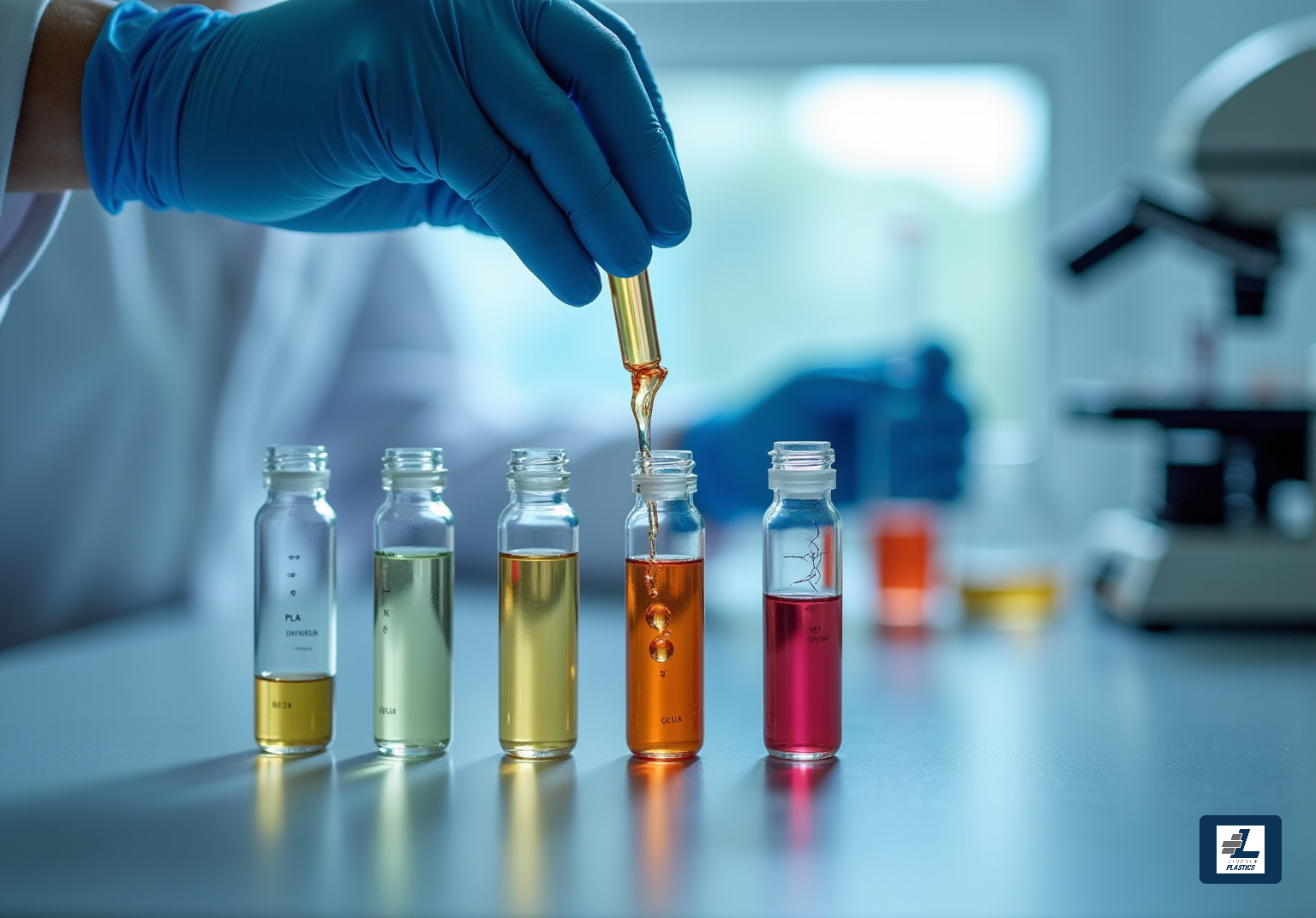
10 FDA Approved Polymers for Effective Drug Delivery Solutions
Overview
Have you ever wondered how medications actually get to where they need to go in your body? It’s a bit of a challenge, right? That’s where the article "10 FDA Approved Polymers for Effective Drug Delivery Solutions" comes in. It dives into some fascinating polymers that have earned FDA approval and how they play a crucial role in making drug delivery systems more effective.
Let’s talk about a few of these polymers, like:
- poly(lactic acid)
- chitosan
- gelatin
These aren’t just fancy names; they’re key players in improving how medications work. By enhancing biocompatibility and allowing for controlled release, these polymers help ensure that medications are both safe and effective. Pretty cool, huh?
So, why should you care about this? Well, understanding these polymers can really open your eyes to how modern pharmaceuticals are evolving. It’s all about making sure that when you take a medication, it does its job well and keeps you safe.
In a nutshell, these FDA-approved polymers are not just technical jargon; they’re essential for the future of drug delivery. If you’re curious to learn more about how these materials are shaping the pharmaceutical landscape, I encourage you to check out the full article. It’s packed with insights that could change the way you think about your medications!
Introduction
The world of drug delivery is changing fast, and it’s all about finding better, more sustainable solutions. Have you ever thought about how the pharmaceutical industry is working to make medications more effective and improve patient outcomes? Well, right now, there’s a big focus on FDA-approved polymers that are coming up with some really innovative ways to deliver therapeutic agents.
In this article, we’re diving into ten amazing polymers that are shaking up drug delivery systems. Each one has its own unique properties and applications that could really change the game in healthcare. So, what challenges and opportunities do you think lie ahead in the quest for the best drug delivery? Exploring these polymers might just give us some answers!
Lincoln Plastics: Custom Extrusion Solutions for Natural Polymers in Drug Delivery
You know, when it comes to custom profile extrusion, Lincoln Plastics really stands out. They’re all about delivering specialized solutions for various sectors, including pharmaceuticals. Have you ever thought about how crucial high-quality natural polymers are for medication transport? Well, Lincoln Plastics has got that covered with their expertise in extrusion molding.
By teaming up with OEMs, they make sure that every product meets those tough quality standards. They even have special checks for 'fit and function'—pretty neat, right? Their robust quality system includes a dedicated quality book for your plastic profile, complete with drawings, critical in-process checks, and run documentation. This commitment to personalization and quality makes Lincoln Plastics a go-to partner for businesses looking to innovate in delivery technologies, especially with the FDA approved polymers list.
And let’s not forget how industry leaders are recognizing the game-changing potential of natural polymers in boosting medication efficacy and safety. It really highlights just how important custom profile extrusion is in healthcare applications. So, if you’re in the market for reliable solutions, Lincoln Plastics might just be the ally you need!
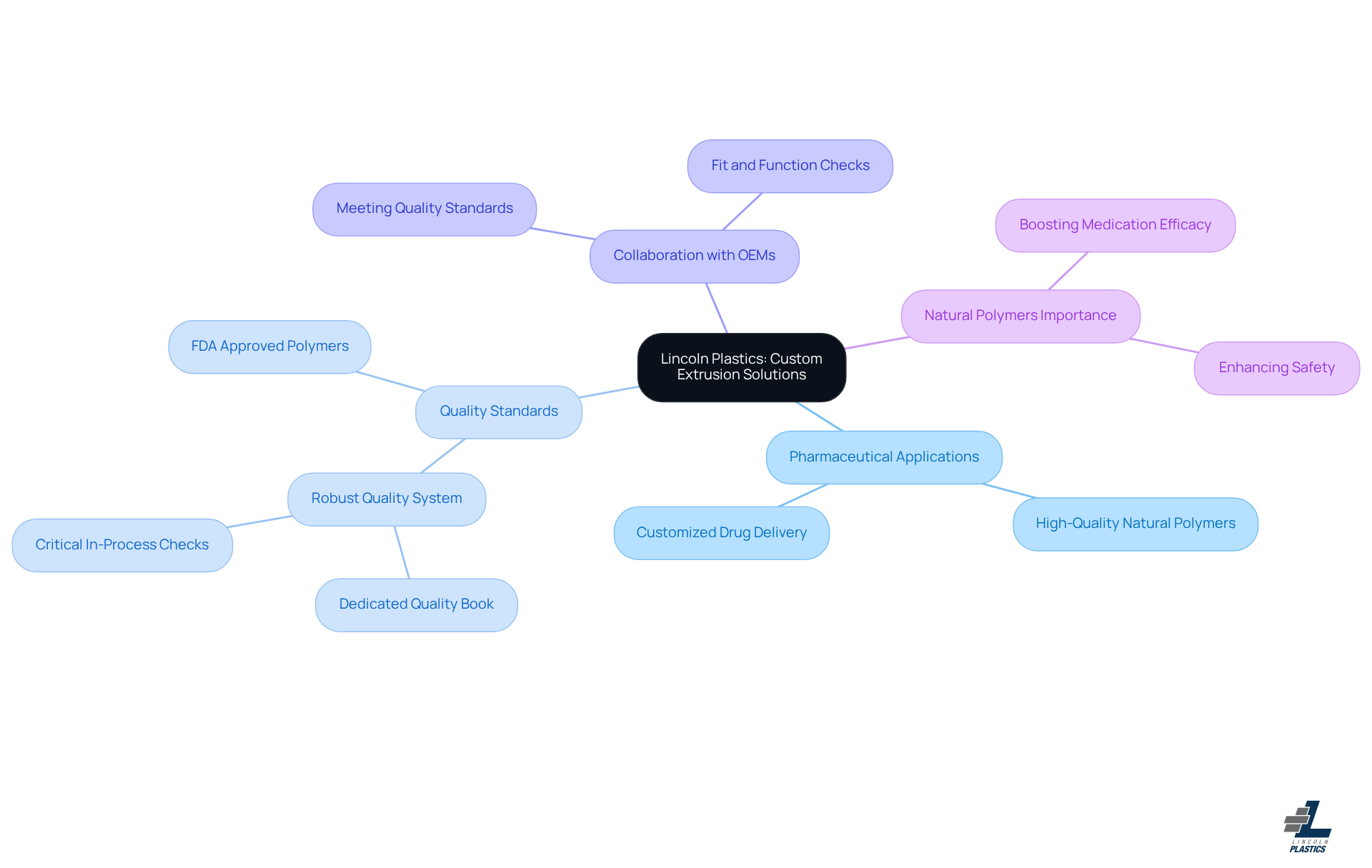
Poly(lactic acid): Biodegradable Polymer for Controlled Drug Release
Have you ever thought about how the materials we use in medicine can impact our health and the environment? Well, poly(lactic acid) (PLA) is making waves as a biodegradable polymer that’s not just good for the planet but also great for our bodies. It’s celebrated for its biocompatibility and its knack for controlled substance release. This versatile polymer can be shaped into all sorts of forms, like microspheres and films, which means we can create drug delivery solutions that really hit the mark—boosting effectiveness while keeping side effects at bay.
What’s even cooler? PLA breaks down safely in the body, making it a go-to choice for sustainable medical products. And the buzz around biodegradable polymers is only getting louder. The market is projected to soar to USD 80.5 billion by 2035, with a whopping CAGR of 21.3%. Why? Because more and more people are looking for eco-friendly options, and regulations on plastic are tightening up.
Let’s look at some real-world examples. Studies have shown that PLA is pretty effective at maintaining the release of active ingredients (APIs) over time. For instance, it can control the release of glucagon-like peptide-1 (GLP1) from PLA matrices for up to 25 days. That’s impressive, right?
Researchers are excited about PLA’s adjustable characteristics, which allow for precise control over release profiles. This makes it a fantastic candidate for various therapeutic applications. As the pharmaceutical industry shifts its focus toward sustainability, you can bet that PLA’s role in medication delivery systems will only grow stronger. It’s becoming a key player in modern pharmaceutical formulations, and that’s something to keep an eye on!

Chitosan: Mucoadhesive Polymer Enhancing Drug Absorption
Have you ever thought about how some medications just don’t seem to work as well as they should? Well, that’s where chitosan comes into play! This natural polysaccharide, derived from chitin, is known for its amazing mucoadhesive properties. It really helps medications stick around longer in the gastrointestinal tract, which means better absorption and effectiveness.
So, how does it work? Chitosan interacts with mucosal surfaces, increasing the contact time of drugs. This boosts their bioavailability, making it easier for our bodies to absorb them. Plus, chitosan is super versatile! It can be crafted into nanoparticles, gels, or films, showing off its adaptability for various medical uses.
What’s even better? Chitosan is biocompatible and non-toxic, making it a great fit for medicinal formulations aimed at getting the best therapeutic results. Recent studies have even found that it helps larger pharmaceutical molecules get absorbed and enhances the stability and effectiveness of vaccines. Talk about a game changer in medication distribution!
But wait, there’s more! Chitosan also has antimicrobial and antifungal properties, which boosts its effectiveness in medicine. Researchers are currently exploring its potential as a nonviral carrier for gene therapy and its applications in personalized medicine and smart medication distribution methods. It’s exciting to see how chitosan is carving out its place in the pharmaceutical world!
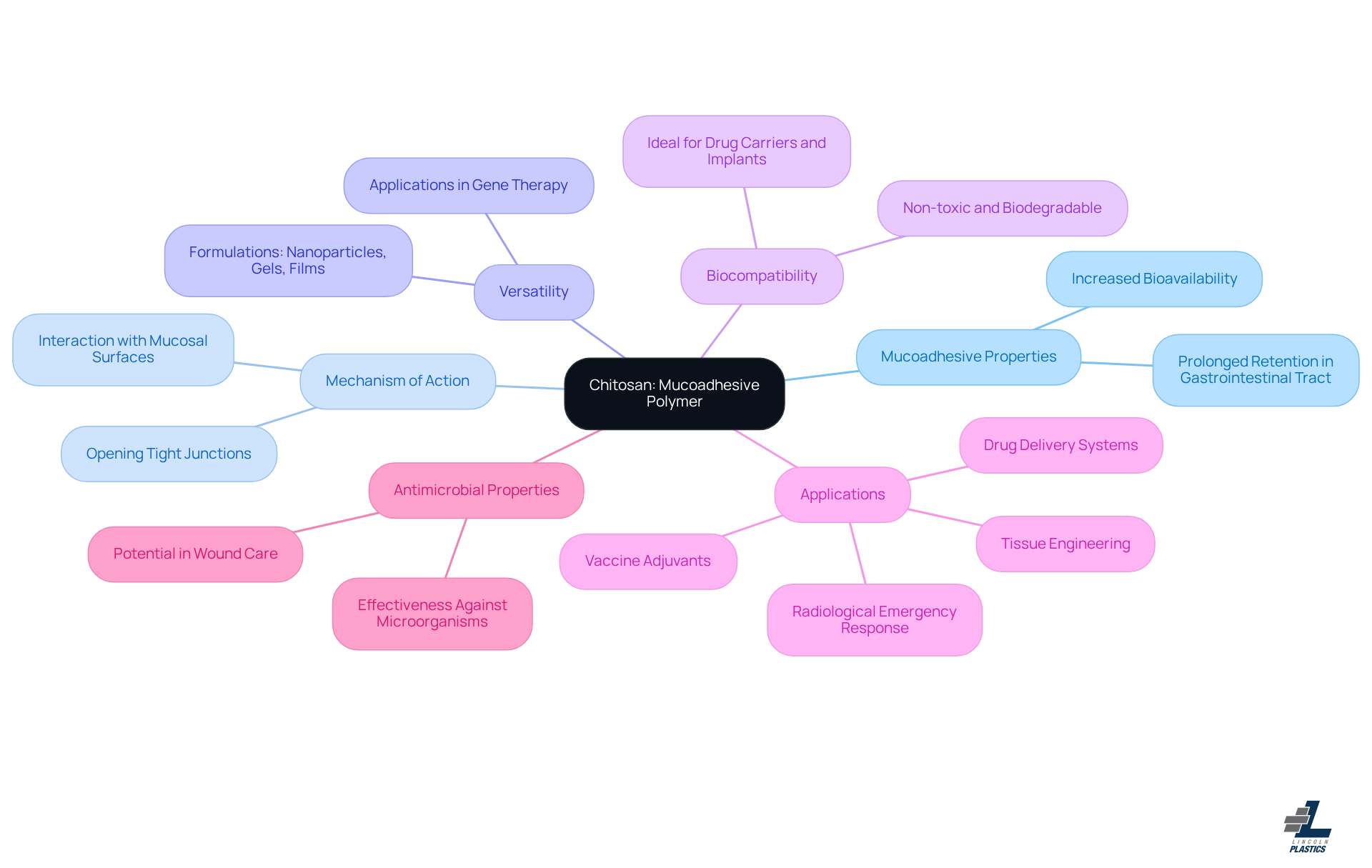
Gelatin: Versatile Polymer for Hydrogel Drug Formulations
Have you ever thought about how important the materials we use in medicine are? Well, gelatin, a natural polymer derived from collagen, is gaining a lot of attention for its amazing compatibility and flexibility in the pharmaceutical world. It’s pretty cool how gelatin can form hydrogels, which means it can encapsulate all sorts of therapeutic agents—think growth factors, vitamins, and even plant extracts. This ability to control how these agents are released is a game-changer, especially for localized therapies.
Now, let’s talk about some exciting advancements! Researchers are customizing gelatin’s properties through crosslinking and chemical tweaks. This means we can create delivery systems that respond to specific triggers, like changes in pH or temperature. Imagine how much more effective medications can be when they’re delivered right where they’re needed!
Industry leaders are buzzing about the versatility of products from the FDA approved polymers list, including gelatin. They see it as a potential game-changer in pharmaceuticals, offering tailored solutions for the regulated release of medications. And the proof is in the pudding—successful applications of gelatin, like delivering chemotherapeutic agents and growth factors, show just how it can enhance patient outcomes with precise and sustained therapeutic delivery.
So, what do you think? Could gelatin be the future of medicine? It’s definitely worth keeping an eye on!

Alginate: Gel-Forming Polymer for Drug Encapsulation
Have you ever thought about how some medications are delivered? It’s pretty fascinating! Alginate, a naturally occurring polysaccharide, plays a key role in this process. When it meets divalent cations, it forms gels, which makes it a fantastic option for encapsulating various substances.
What’s really cool is that alginate can create stable hydrogels. This means medications can be released in a controlled way over extended periods. Imagine taking a pill that releases medicine gradually, keeping you feeling better for longer!
Now, let’s talk about how alginate can adapt to its environment. It can respond to changes in pH or ionic strength, which helps improve how accurately medications are administered. This flexibility is why alginate is a popular choice for oral, injectable, and topical medication systems.
So, next time you think about how medications work, remember alginate and its amazing properties! It’s all about making sure you get the right dose at the right time.

Hyaluronic Acid: Hydrating Polymer for Enhanced Bioavailability
Hyaluronic acid (HA) is a naturally occurring substance that’s pretty famous for its amazing hydrating abilities. You might not know this, but in the world of medication, HA really steps up the game by boosting how well therapeutic agents work. It does this by making them more soluble and stable. Plus, HA has this cool knack for forming hydrogels, which helps in encapsulating substances. This means we can control how and when they’re released, which is super handy, especially in eye and skin treatments where hydration and bioavailability are key for getting the best results.
Now, let’s talk about what’s trending. There’s a growing buzz around HA formulations, and industry experts are noticing that its biocompatibility and versatility make it a go-to choice for new delivery systems. For example, HA-based prodrugs have shown some impressive results in solubility. Some studies even report that HA-modified formulations can achieve up to 500 times more solubility than their unmodified versions. That’s pretty remarkable, right?
You might be wondering how HA is actually used in real life to improve medication bioavailability. Well, it’s making waves in various therapeutic areas. Take anticancer agents like doxorubicin, for instance. When modified with HA, they’ve shown reduced toxicity and better therapeutic outcomes, which is a game changer in oncology. And let’s not forget about its role in eye treatments. HA’s hydrating properties really enhance the effectiveness of solutions for chronic dry eye. As the demand for effective medication delivery keeps rising, HA is leading the charge in formulation development.
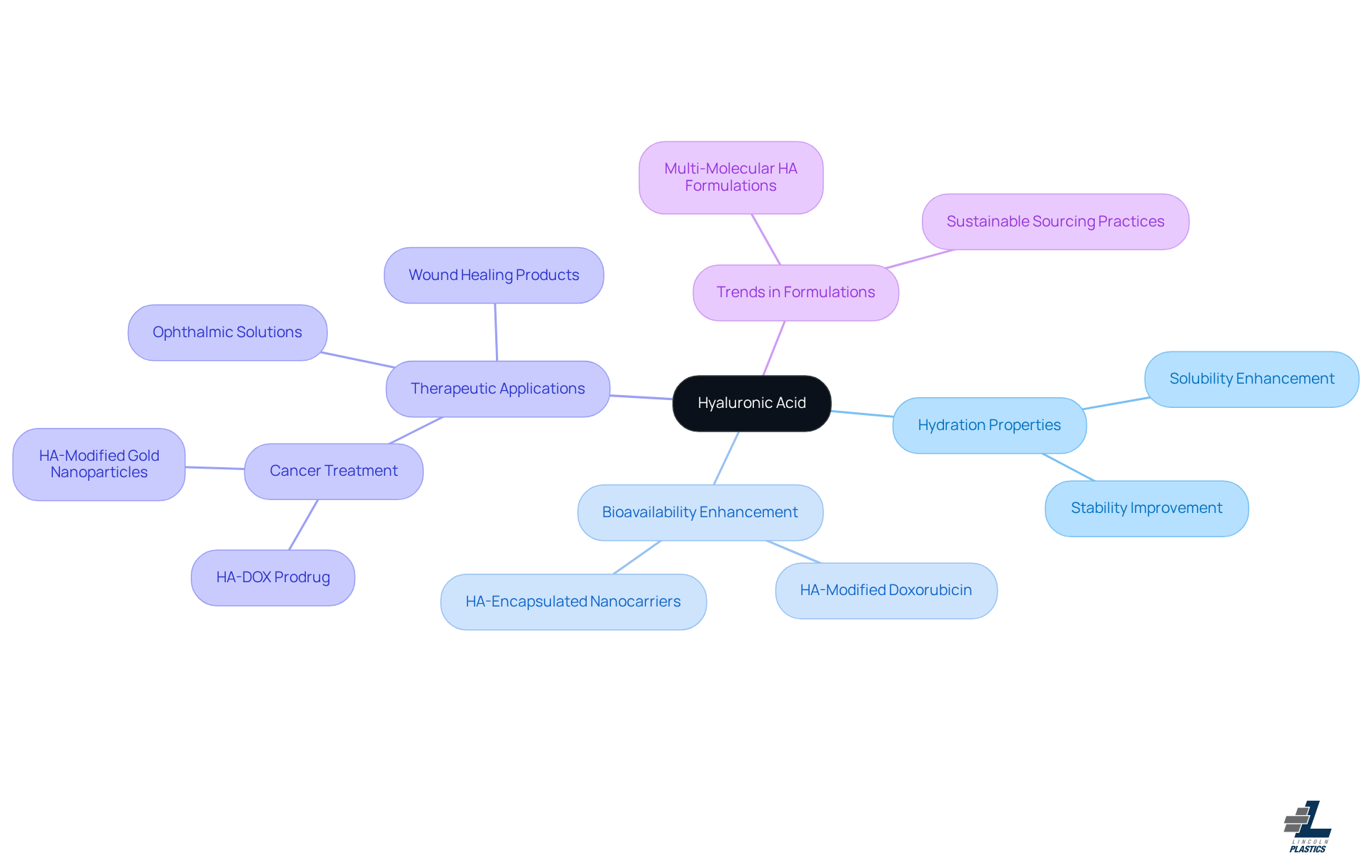
Pectin: Gelling Polymer for Stable Drug Formulations
Have you ever wondered how some medicines manage to deliver their benefits so effectively? Well, that’s where pectin comes into play! This natural polysaccharide is famous for its ability to form gels in acidic environments, making it a go-to gelling agent in pharmaceutical formulations.
What’s really cool about pectin is its unique properties. It helps stabilize emulsions and encapsulate active substances, which can significantly boost how well a treatment works. Recently, there’s been some exciting progress in pectin-based medication delivery methods, especially with controlled release mechanisms. This means that the therapeutic effects can last longer, giving patients more consistent relief.
And let’s not forget about pectin’s biocompatibility and safety profile. It’s suitable for a wide range of medicinal applications, whether you’re looking at oral or topical formulations. Experts in the field highlight pectin’s stability as a key factor in enhancing delivery systems. It’s all about improving therapeutic outcomes across various medical applications.
So, next time you think about how medicines work, remember pectin and its incredible role in making treatments more effective!

Starch: Versatile Excipients in Drug Delivery Systems
Starch is a real game-changer in the world of pharmaceuticals. You might not realize it, but this versatile excipient plays multiple roles—it’s a binder, a disintegrant, and a filler. This means it helps improve the stability and effectiveness of various formulations. Pretty cool, right?
Now, let’s talk about something fascinating: the ability to design starch-based structures for controlled release. This feature allows for the gradual release of active ingredients over time, which is super important for boosting therapeutic outcomes. Plus, starch is biocompatible and widely available, making it a fantastic choice for delivering medications in tablets, capsules, and hydrogels.
Recent innovations in starch-based formulations have really expanded its potential. It’s even making waves in personalized medicine and advanced drug delivery systems. Have you ever thought about how adaptable starch is? Industry experts highlight that this flexibility lets formulators enhance medication performance based on specific properties. That’s why starch is such a crucial player in modern pharmaceutical development. So, next time you think about medication, remember the role of starch—it’s more important than you might think!
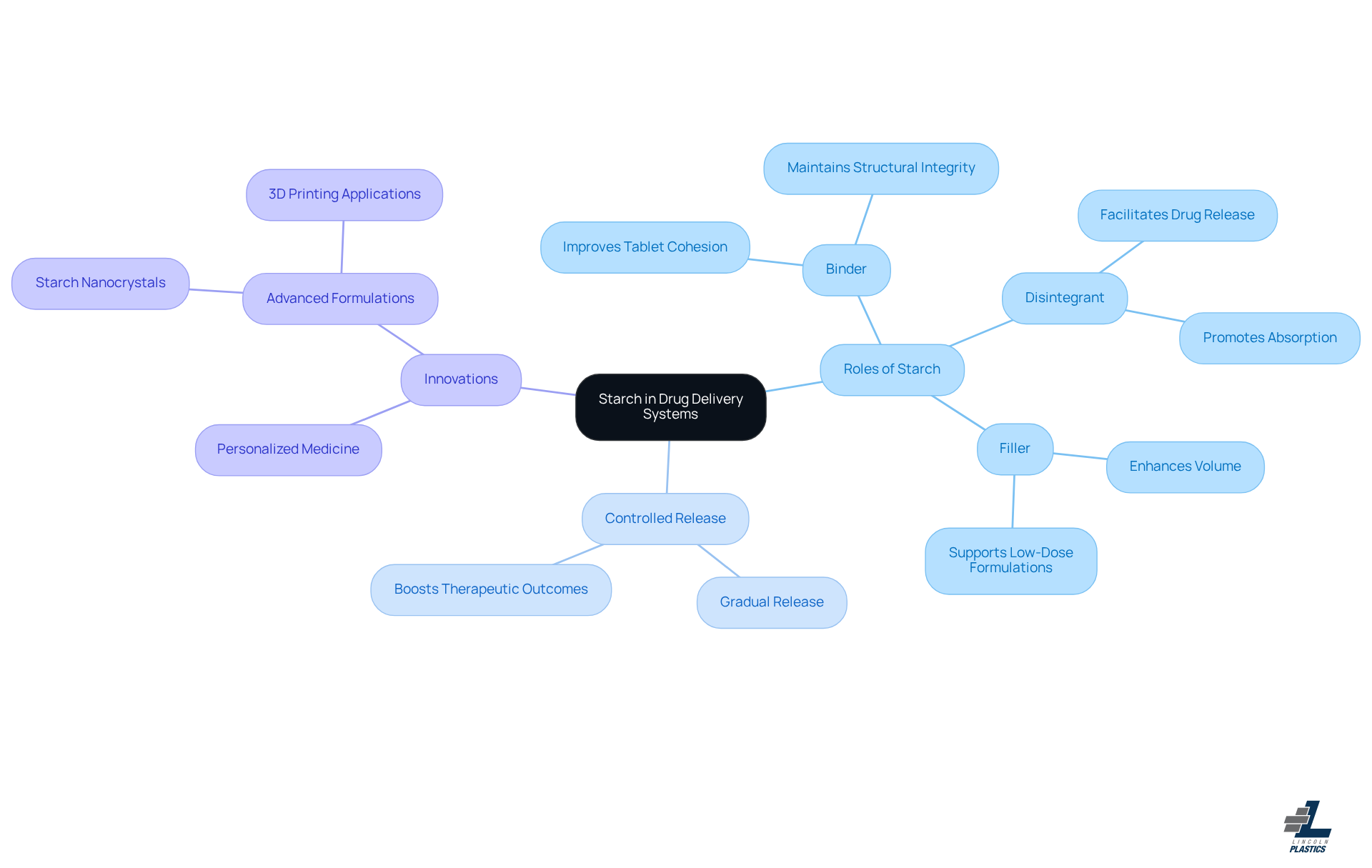
Cellulose Derivatives: Thickening Agents for Drug Formulations
Have you ever wondered how some medications seem to work better than others? Well, a big part of that can be attributed to cellulose derivatives, like hydroxypropyl methylcellulose (HPMC) and carboxymethyl cellulose (CMC). These ingredients are often used as thickening agents in pharmaceutical formulations, and they play a crucial role in enhancing the viscosity and stability of liquid medications.
So, what does that mean for you? Simply put, these cellulose derivatives help improve the overall effectiveness of medication delivery systems. They can even change how medications are released in your body, allowing for controlled and sustained release. Isn’t that fascinating?
Plus, their biocompatibility and versatility make cellulose derivatives a go-to choice in creating various pharmaceutical products. Next time you take a liquid medication, you might just appreciate the science behind it a little more!
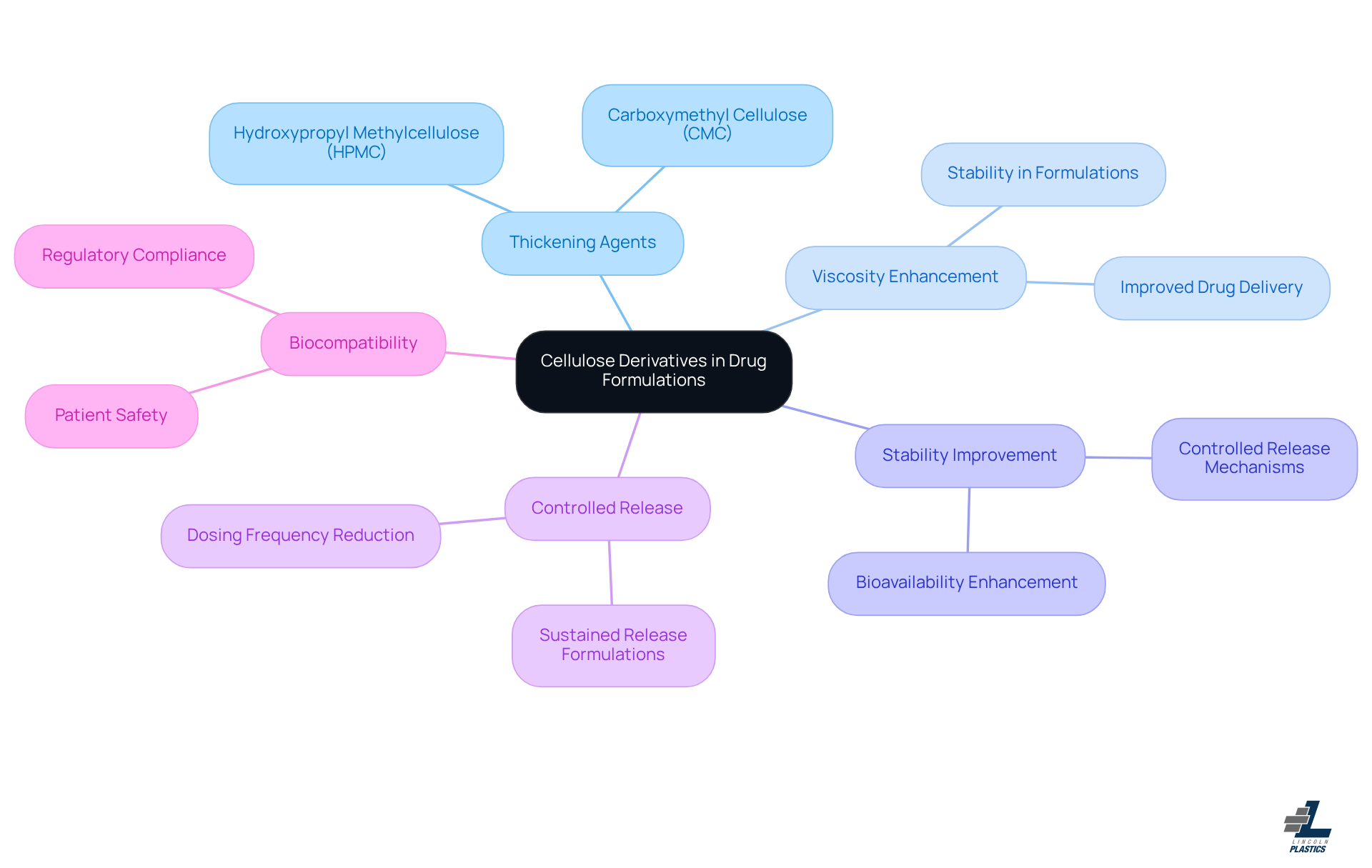
Casein: Unique Polymer for Innovative Drug Delivery Solutions
Have you ever thought about how medications reach their target in our bodies? Well, here’s where casein, a protein found in milk, comes into play. It’s not just any protein; it’s a unique polymer that can form micelles, which are tiny structures that can encapsulate hydrophobic substances. This means it can carry those tricky-to-handle compounds effectively.
What makes casein really stand out is its biocompatibility. This means it plays nicely with our biological systems, making it an excellent carrier for various therapeutic agents. Imagine being able to create casein-based formulations that deliver medications precisely where they’re needed. This not only boosts the bioavailability of those drugs but also helps in reducing side effects. Sounds great, right?
Now, let’s talk about versatility. Casein is proving to be a valuable player in developing innovative drug delivery systems, especially in areas like oncology and chronic disease management. It’s exciting to think about the potential this protein has in improving treatment outcomes. So, next time you hear about casein, remember it’s not just for your morning coffee; it’s paving the way for smarter medication delivery!
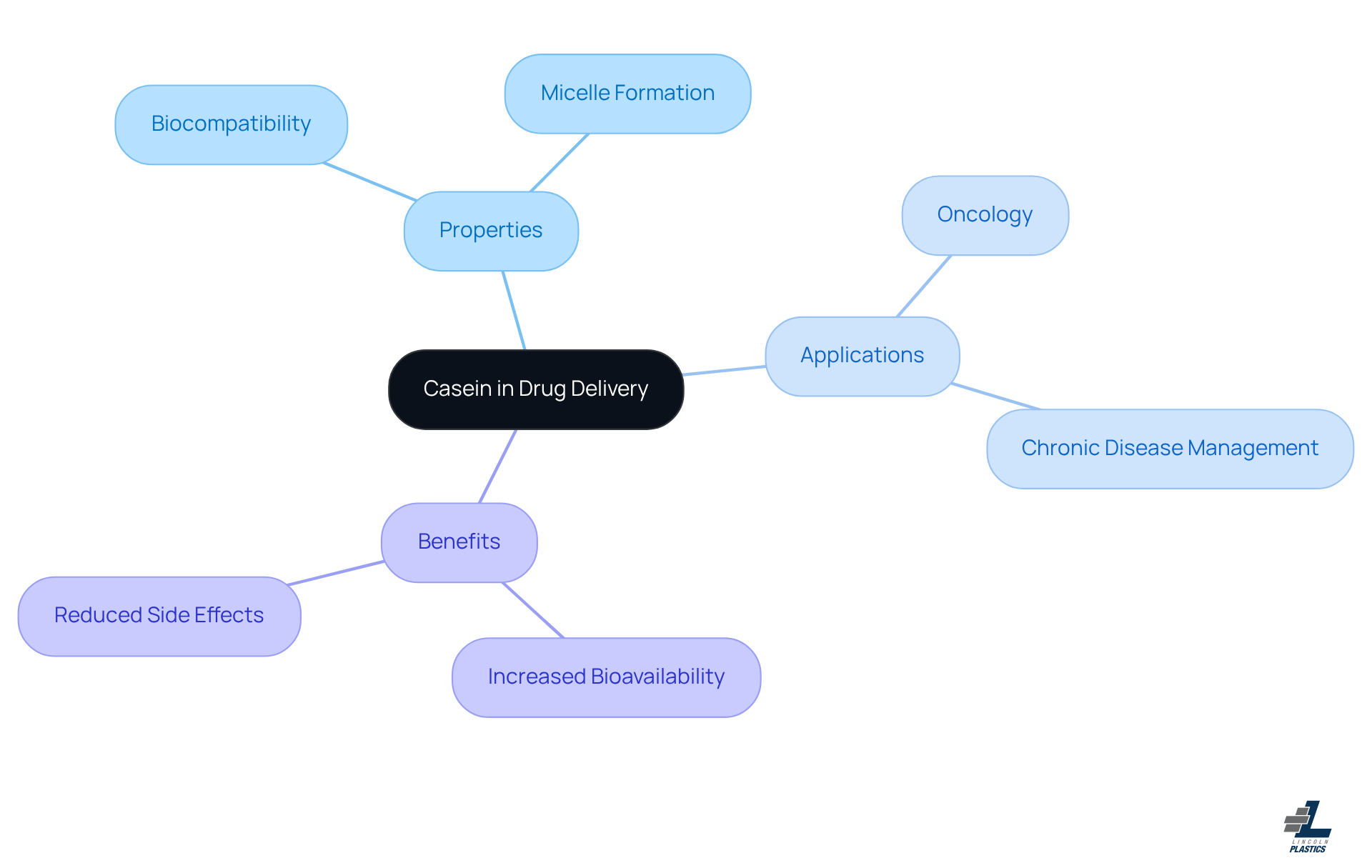
Conclusion
Exploring FDA-approved polymers for drug delivery is like stepping into a whole new world in pharmaceutical development. These materials do more than just boost how well medications work; they tackle important issues like sustainability and patient safety. By tapping into the unique properties of natural polymers, the industry is crafting innovative delivery systems that promise better therapeutic outcomes.
So, what’s the scoop? Well, we’ve got a range of versatile polymers on our hands, like:
- poly(lactic acid)
- chitosan
- gelatin
- alginate
- hyaluronic acid
- pectin
- starch
- cellulose derivatives
- casein
Each of these brings something special to the table—think biodegradable options that help the environment or mucoadhesive properties that make drugs easier to absorb. Ongoing research in these areas highlights just how crucial these materials will be in shaping the future of medication delivery.
As the need for effective, targeted, and sustainable drug delivery solutions grows, it’s clear that the pharmaceutical industry needs to get on board with these advancements. Stakeholders, this is your cue! Investing in research and collaboration is key to unlocking the full potential of FDA-approved polymers. Let’s ensure that patients get the best treatments while also caring for our planet. The future of drug delivery isn’t just about innovation; it’s about making a real difference in health and well-being through thoughtful, science-driven solutions.
Now, how exciting is that?
Frequently Asked Questions
What is Lincoln Plastics known for?
Lincoln Plastics specializes in custom profile extrusion solutions, particularly for the pharmaceutical sector, focusing on high-quality natural polymers for medication transport.
How does Lincoln Plastics ensure product quality?
They collaborate with OEMs to meet stringent quality standards and conduct special checks for 'fit and function', maintaining a robust quality system that includes a dedicated quality book with documentation and critical in-process checks.
Why are natural polymers important in drug delivery?
Natural polymers enhance medication efficacy and safety, making them crucial in healthcare applications, particularly in custom profile extrusion.
What is poly(lactic acid) and why is it significant?
Poly(lactic acid) (PLA) is a biodegradable polymer known for its biocompatibility and ability to control substance release, making it an effective material for drug delivery systems.
How does PLA contribute to sustainable medical products?
PLA breaks down safely in the body and is increasingly favored due to its eco-friendly nature, aligning with the growing demand for sustainable options in the medical field.
What are the market projections for biodegradable polymers like PLA?
The market for biodegradable polymers is projected to reach USD 80.5 billion by 2035, with a compound annual growth rate (CAGR) of 21.3%, driven by a shift towards eco-friendly materials and stricter plastic regulations.
What are some applications of PLA in drug delivery?
PLA can be shaped into various forms such as microspheres and films, allowing for controlled release of active ingredients (APIs) over extended periods, such as glucagon-like peptide-1 (GLP1) for up to 25 days.
What is chitosan and how does it enhance drug absorption?
Chitosan is a natural polysaccharide derived from chitin, known for its mucoadhesive properties that increase the contact time of drugs in the gastrointestinal tract, thereby improving absorption and effectiveness.
What are the benefits of using chitosan in medicinal formulations?
Chitosan is biocompatible, non-toxic, and versatile, capable of being formed into nanoparticles, gels, or films. It also enhances the stability and effectiveness of vaccines and larger pharmaceutical molecules.
What additional properties does chitosan have?
Chitosan possesses antimicrobial and antifungal properties, making it effective in medicine, and researchers are exploring its potential in gene therapy and personalized medicine.
List of Sources
- Lincoln Plastics: Custom Extrusion Solutions for Natural Polymers in Drug Delivery
- (PDF) The promising role of semi-solid extrusion technology in custom drug formulation for pediatric medicine (https://researchgate.net/publication/383551790_The_promising_role_of_semi-solid_extrusion_technology_in_custom_drug_formulation_for_pediatric_medicine)
- Poly(lactic acid): Biodegradable Polymer for Controlled Drug Release
- Biodegradable Polymers Market Size & Outlook 2025 to 2035 (https://futuremarketinsights.com/reports/biodegradable-polymers-market)
- Polylactic Acid Market worth $4.51 billion by 2030, at a CAGR of 17.5%, says MarketsandMarkets™ (https://globenewswire.com/news-release/2025/09/25/3155942/0/en/Polylactic-Acid-Market-worth-4-51-billion-by-2030-at-a-CAGR-of-17-5-says-MarketsandMarkets.html)
- Poly(Lactic Acid)-Based Microparticles for Drug Delivery Applications: An Overview of Recent Advances - PMC (https://pmc.ncbi.nlm.nih.gov/articles/PMC8877458)
- Polylactic Acid (PLA) Market Size to Surpass USD 3,864.79 Million by 2034 Amid Rising Demand for Sustainable Packaging (https://finance.yahoo.com/news/polylactic-acid-pla-market-size-082000842.html)
- Chitosan: Mucoadhesive Polymer Enhancing Drug Absorption
- Why Pharmaceutical Companies Are Turning to Chitosan (https://chitosan-indonesia.com/pharmaceutical-companies-chitosan)
- Novel Oral Chitosan-Based Compound Shows Promise for Radiological Emergency Response (https://globalbiodefense.com/2025/06/12/novel-oral-chitosan-based-compound-shows-promise-for-radiological-emergency-response)
- Gelatin: Versatile Polymer for Hydrogel Drug Formulations
- Current Trends in Gelatin-Based Drug Delivery Systems (https://mdpi.com/1999-4923/15/5/1499)
- How hydrogels are shaping the future of targeted cancer drug delivery (https://news-medical.net/news/20250710/How-hydrogels-are-shaping-the-future-of-targeted-cancer-drug-delivery.aspx)
- Hydrogels in Drug Delivery: Smart Carriers for Targeted Therapies (https://plasticsengineering.org/2025/07/hydrogels-in-drug-delivery-smart-carriers-for-targeted-therapies-009367)
- Rice scientists develop hydrogel platform for long-lasting, precision drug delivery (https://news.rice.edu/news/2025/rice-scientists-develop-hydrogel-platform-long-lasting-precision-drug-delivery)
- Frontiers | Gelatin-based anticancer drug delivery nanosystems: A mini review (https://frontiersin.org/journals/bioengineering-and-biotechnology/articles/10.3389/fbioe.2023.1158749/full)
- Alginate: Gel-Forming Polymer for Drug Encapsulation
- Alginate-Based Encapsulation Fabrication Technique for Drug Delivery: An Updated Review of Particle Type, Formulation Technique, Pharmaceutical Ingredient, and Targeted Delivery System (https://mdpi.com/1999-4923/16/3/370)
- Alginate as a Promising Biopolymer in Drug Delivery and Wound Healing: A Review of the State-of-the-Art - PMC (https://pmc.ncbi.nlm.nih.gov/articles/PMC9409034)
- Alginate-Based Encapsulation Fabrication Technique for Drug Delivery: An Updated Review of Particle Type, Formulation Technique, Pharmaceutical Ingredient, and Targeted Delivery System - PMC (https://pmc.ncbi.nlm.nih.gov/articles/PMC10975882)
- Current Status of Alginate in Drug Delivery - PMC (https://pmc.ncbi.nlm.nih.gov/articles/PMC7428837)
- Hyaluronic Acid: Hydrating Polymer for Enhanced Bioavailability
- Hyaluronic Acid-Based Nanocarriers for Anticancer Drug Delivery (https://mdpi.com/2073-4360/15/10/2317)
- Hyaluronic Acid in Pharma: Production, Regulations & Suppliers (https://pharmaoffer.com/blog/what-is-hyaluronic-acid)
- Hyaluronic Acid: A Review of the Drug Delivery Capabilities of This Naturally Occurring Polysaccharide - PMC (https://pmc.ncbi.nlm.nih.gov/articles/PMC9460006)
- Acetylated Hyaluronic Acid: Enhanced Bioavailability and Biological Studies - PMC (https://pmc.ncbi.nlm.nih.gov/articles/PMC4121155)
- Why Hyaluronic Acid Formulations Are in High Demand in 2025 (https://elchemy.com/blogs/chemical-market/why-hyaluronic-acid-formulations-are-in-demand-in-2025)
- Pectin: Gelling Polymer for Stable Drug Formulations
- Structure and Applications of Pectin in Food, Biomedical, and Pharmaceutical Industry: A Review (https://mdpi.com/2079-6412/11/8/922)
- Enhancing the Emulsification and Photostability Properties of Pectin from Different Sources Using Genipin Crosslinking Technique - PMC (https://pmc.ncbi.nlm.nih.gov/articles/PMC9407367)
- Silicones 15. Breast Augmentation Implants (https://chem.libretexts.org/Ancillary_Materials/Exemplars_and_Case_Studies/Case_Studies/Heat_and_Chemical_Resistant_Silicone_Rubber/Silicones_x15._Breast_Augmentation_Implants)
- Pectin Hydrogels: Gel-Forming Behaviors, Mechanisms, and Food Applications - PMC (https://pmc.ncbi.nlm.nih.gov/articles/PMC10530747)
- Starch: Versatile Excipients in Drug Delivery Systems
- Antimicrobial Solid Starch–Iodine Complex via Reactive Extrusion and Its Application in PLA-PBAT Blown Films (https://mdpi.com/2073-4360/16/11/1487)
- Exploring starch-based excipients in pharmaceutical formulations: Versatile applications and future perspectives - PubMed (https://pubmed.ncbi.nlm.nih.gov/40286879)
- Understanding Starch as a Pharmaceutical Excipient: Properties, Applications, and Source Impact (https://nbinno.com/pharmaceutical-intermediates/understanding-starch-as-a-pharmaceutical-excipient-properties-applications-and-source-impact)
- The Role of Starch in Pharmaceutical Formulations: A Manufacturer's Perspective (https://nbinno.com/article/thickeners/role-of-starch-in-pharmaceutical-formulations-manufacturer-perspective-sn)
- Cellulose Derivatives: Thickening Agents for Drug Formulations
- Controlled Drug Release Matrices Using Sodium CMC - HPMC factory | Hydroxypropyl Methyl Cellulose Ether manufacturers (https://qianhaochem.com/news/controlled-drug-release-matrices-using-sodium-cmc)
- Pharmaceutical Cellulose Derivative Excipient Market By Application 2025 (https://linkedin.com/pulse/pharmaceutical-cellulose-derivative-nldqe)
- Cellulose Derivatives Excipient Market Growth and Share 2031 (https://theinsightpartners.com/reports/cellulose-derivatives-excipient-market)
- Cellulose Derivative Excipient Market Global Analysis - 2034 (https://factmr.com/report/cellulose-derivative-excipient-market)
- Cellulose Derivatives Market Share, Forecast, Growth Analysis, and Opportunities (https://marketsandmarkets.com/Market-Reports/cellulose-derivatives-market-41990174.html)
- Casein: Unique Polymer for Innovative Drug Delivery Solutions
- Casein-based formulations as promising controlled release drug delivery systems - PubMed (https://pubmed.ncbi.nlm.nih.gov/21338636)
- Casein-based formulations as promising controlled release drug delivery systems | Request PDF (https://researchgate.net/publication/49852744_Casein-based_formulations_as_promising_controlled_release_drug_delivery_systems)
- Casein Micelles as Nanocarriers for Benzydamine Delivery (https://mdpi.com/2073-4360/13/24/4357)
- Kinetic description of changes in the size of casein microparticles under simulated gastric conditions - Scientific Reports (https://nature.com/articles/s41598-025-22216-7)
- β-casein nanovehicles for oral delivery of chemotherapeutic drug combinations overcoming P-glycoprotein-mediated multidrug resistance in human gastric cancer... | Oncotarget (https://oncotarget.com/article/8019/text)


